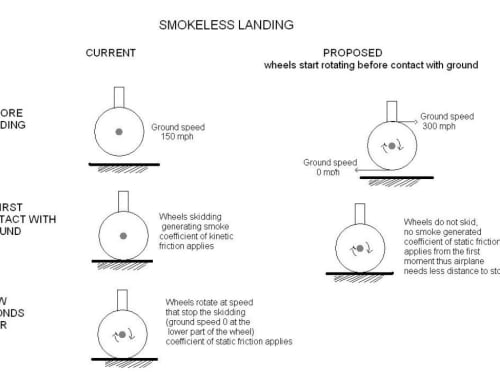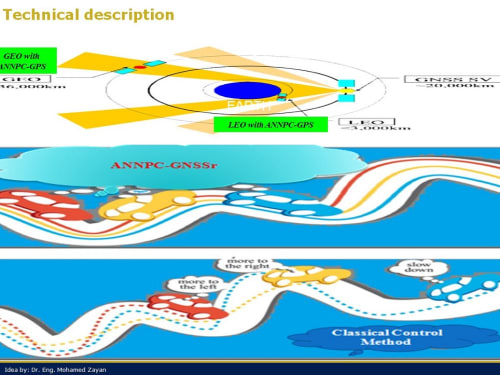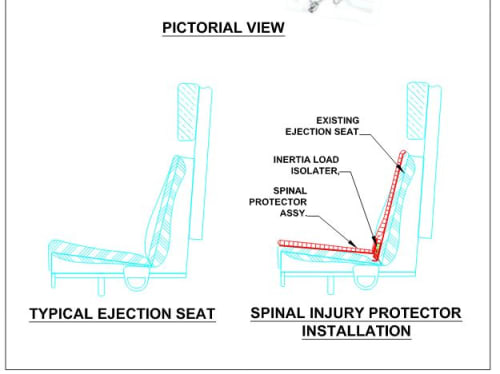2013
Aerospace & Defense
Since the 1950’s the state-of-the-art for transport aircraft design has been the extendable ‘tube’ that transfers strength and rigidity through the external skin. This design includes a passenger compartment with its ‘overhead bins’ and a floor under which cargo and utility equipment ride.
The SM-39 is a next generation air superiority fighter and fighter-bomber. Designed to perform the missions of the F-22, F-15, F/A-18E/F and the now retired F-14 Tomcat and A-6 Intruder, the SM-39 is a twin engine, piloted or unpiloted autonomous, low observable aircraft. With two internal weapon bays,
The basic idea is upon landing to start the rotation of the airplane wheels before contact with the ground.
Courrently at the moment of the first contact with the ground, the wheels skid generating smoke and reducing the life of the tires because the wheel speed is above cero in relation to the ground.
This idea makes use of Adaptive Neural-Network Predictive Controllers (ANNPC) in conjunction with GPS signals to control the orbit and attitude of any type of Earth-orbiting spacecraft.
This Spinal Injury Protector for fighter aircraft ejection seats is meant for the protection of fighter pilot (usually military) from serious spinal injury during an emergency evacuation. This Spinal Injury protector is a portable light-weight and ready to use add-on seat bottom assembly suitable to fit all ejection seats.
Why this Spinal Injuries Protector is developed?
Hydrodynamically speaking, screw propellers of conventional marine propulsions represent vortex systems rotating in transverse to the flow plane that generates periodic impulses of pressure in water and this way create underwater acoustic field being used for detection and identification of ships.
The submersible speedboat can be carried assembled by road, rail or ship. The small size, high speed, the use of the water jet, low acoustic, electric, hydrodynamic, thermal and magnetic footprint, the silent planned displacement, with the propulsion system off and consecutive surfacing / diving, allows to act in a "noisy" environment, avoiding the need countermeasures. Fins,
This invention involves controlling the unwanted acoustic noise inherent in a highly concentrated flame by modulating an electric arc embedded in the flame. The purpose of the arc is to generate an inverse modulated signal, which will inhibit the unwanted noise, generated by the combustion gases in the flame.
The Innovation
Launch vehicle rocket engines must operate from sea level to near-vacuum conditions. They require high thrust at takeoff when the vehicle is heaviest. As the vehicle ascends to space it requires a high specific impulse (Isp) to minimize the propellant consumption. These requirements are in conflict.
The idea of reaching up to the heavens has captivated several generations. For this challenge, rockets have shown to be extremely inefficient, and the idea of constructing a “Centrifugally Extended Carbon Nano-Tube Tether Space Elevator” (CECNTTSE) presents unsolved technological challenges. We conclude that; to efficiently achieve the goal of unrestricted movement away from Earth’s gravitational pull,
Page 8 of 10









